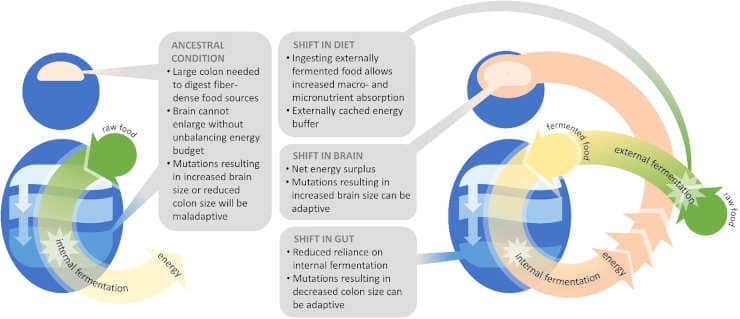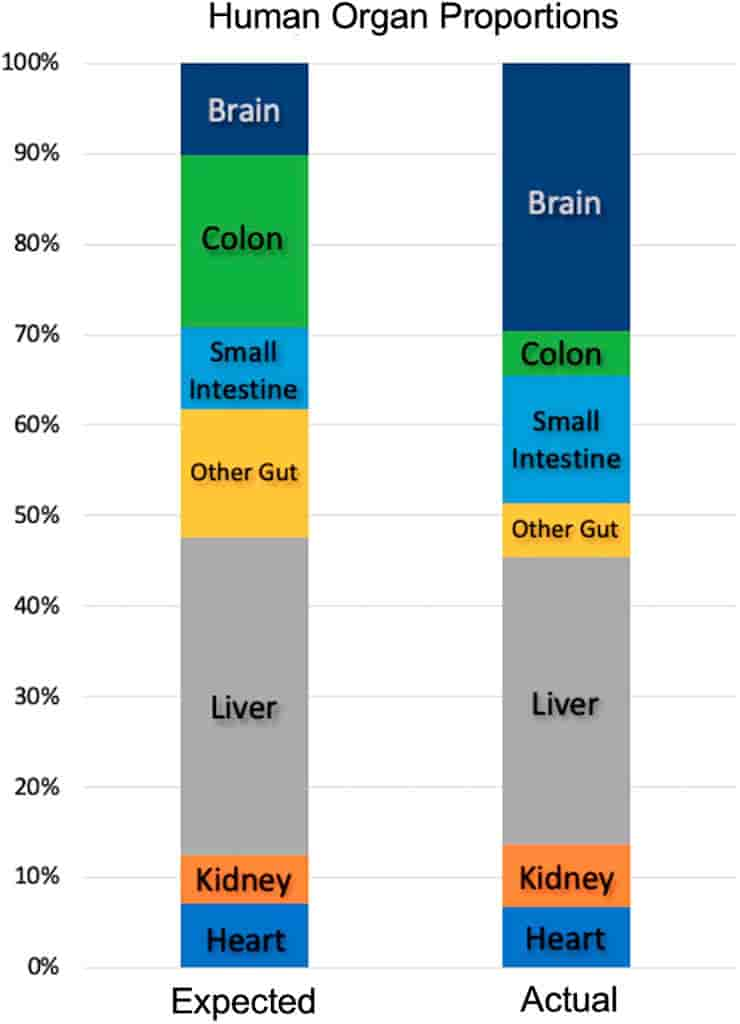The evolution of the human brain from a smaller primate brain into the large, powerful organ it is today is a marvel, but how it happened is still unknown.
Scientists can identify ‘when’ our evolutionary ancestors gained larger brains, which about tripled in size when our ancestors evolved from Australopithecines, bipedal monkeys. But the ‘why’ it happened when it did — what prompted the change — has remained a mystery.
While some argue that the use of fire, and later discovery of cooking, provided enough nutrition for our larger-brained predecessors to become dominant, a recent theory suggests a different spark: fermentation.
“Brain tissue is metabolically expensive. It requires a lot of calories to keep it running, and in most animals, having enough energy just to survive is a constant problem,”
said Erin Hecht, one of the authors of the study.
Million-year Timeline Gap
Something in the diet of larger-brained Australopiths must have altered for them to survive. Changes in what these human ancestors eaten or, more commonly, the discovery of cooking allowed them to obtain more useful calories from whatever they ate have been proposed as theories.
But the problem with this theory is that the earliest evidence places the use of fire at approximately 1.5 million years ago — significantly later than the development of the hominid brain.
“Our ancestors’ cranial capacity began increasing 2.5 million years ago, which conservatively gives us about a 1-million-year gap in the timeline between brain size increasing and the possible emergence of cooking technology. Some other dietary change must have been releasing metabolic constraints on brain size, and fermentation seems like it could fit the bill.”
explained Katherine L. Bryant, one of the paper’s co-authors and currently a researcher at the Institute for Language, Communication, and the Brain at Aix-Marseille Université in France.
Accidental Side Effect

Brains couldn’t have grown larger before something had to have changed in their diets.
Hecht stated that in recent years, scholars have proposed alternative theories, such as eating rotten flesh. Hecht and her colleagues propose a different hypothesis in this new paper: that cached (or saved) food fermented, and that this ‘pre-digested’ food provided a more accessible form of nourishment, fueling that bigger brain and allowing our larger-brained ancestors to survive and thrive through natural selection.
“This was not necessarily an intentional endeavor. It may have been an accidental side effect of caching food. And maybe, over time, traditions or superstitions could have led to practices that promoted fermentation or made fermentation more stable or more reliable,”
Hecht posited.
Role of Fermented Foods
The fact that the human large intestine is proportionally smaller than that of other primates supports this argument, implying that we adapted to food that has already been broken down by the chemical process of fermentation. Furthermore, fermented foods may be found in all nations and cuisine groups, from wine and cheese in Europe to soy sauce and natto, or soybeans, in Asia.

Hecht proposed further research into brain responses to fermented and non-fermented meals, as well as research into olfactory and taste receptors, maybe using ancient DNA. These are all fertile regions for other scholars to pick up on, according to the evolutionary biologist. Hecht’s research focuses more on how brain circuits have evolved to support complex behaviors in both living humans and canines.
As research progresses, Bryant sees possibilities for a wide range of benefits.
“This hypothesis also gives us as scientists even more reasons to explore the role of fermented foods on human health and the maintenance of a healthy gut microbiome. There have been a number of studies in recent years linking gut microbiome to not only physical but mental health,”
she said.
Abstract
Brain tissue is metabolically expensive. Consequently, the evolution of humans’ large brains must have occurred via concomitant shifts in energy expenditure and intake. Proposed mechanisms include dietary shifts such as cooking. Importantly, though, any new food source must have been exploitable by hominids with brains a third the size of modern humans’. Here, we propose the initial metabolic trigger of hominid brain expansion was the consumption of externally fermented foods. We define “external fermentation” as occurring outside the body, as opposed to the internal fermentation in the gut. External fermentation could increase the bioavailability of macro- and micronutrients while reducing digestive energy expenditure and is supported by the relative reduction of the human colon. We discuss the explanatory power of our hypothesis and survey external fermentation practices across human cultures to demonstrate its viability across a range of environments and food sources. We close with suggestions for empirical tests.
Reference:
- Bryant, K.L., Hansen, C. & Hecht, E.E. Fermentation technology as a driver of human brain expansion. Commun Biol 6, 1190 (2023). Doi: 10.1038/s42003-023-05517-3
